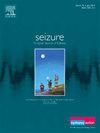Hippocampal deep brain stimulation for drug-resistant epilepsy: Insights from bilateral temporal lobe and posterior epilepsy cases
IF 2.7
3区 医学
Q2 CLINICAL NEUROLOGY
引用次数: 0
Abstract
Purpose
This study evaluates the long-term efficacy of hippocampal deep brain stimulation (Hip-DBS) in patients with drug-resistant epilepsy (DRE), specifically focusing on bilateral temporal lobe epilepsy (BTLE) and posterior epilepsy (PE).
Methods
A retrospective analysis was conducted on 15 DRE patients (11 BTLE, 4 PE) who underwent bilateral Hip-DBS at Samsung Medical Center over an eight-year period. Medical records, seizure diaries, and neuropsychological assessments were reviewed. The surgical and follow-up protocols were adapted from our previous clinical research.
Results
The median seizure reduction rate was 77.8 % for disabling seizures (DS) and 47.9 % for non-disabling seizures (NDS). Subgroup analysis revealed a 77.8 % reduction in DS for BTLE patients and 68.8 % for PE patients. The overall responder rate was 86.7 % for DS and 50 % for NDS. Neuropsychological evaluations showed stable cognitive functions post-treatment, with a non-significant trend towards improvement in non-verbal and visuo-spatial cognitive domains.
Conclusion
This study provides preliminary evidence supporting the efficacy of Hip-DBS in reducing seizure frequency in both BTLE and PE patients, with a more pronounced effect on disabling seizures. The potential cognitive preservation and possible enhancement in specific domains warrant further investigation. Despite limitations such as the retrospective design and reliance on self-reported seizure frequencies, these findings encourage further exploration of Hip-DBS as a treatment modality for DRE, particularly in cases where resective surgery is contraindicated.
海马深部脑刺激治疗耐药癫痫:来自双侧颞叶和后部癫痫病例的见解。
目的:本研究评估海马深部脑刺激(Hip-DBS)治疗耐药癫痫(DRE)患者的长期疗效,特别关注双侧颞叶癫痫(BTLE)和后叶癫痫(PE)。方法:回顾性分析三星医疗中心8年来接受双侧髋关节- dbs治疗的15例DRE患者(11例BTLE, 4例PE)。研究人员回顾了医疗记录、癫痫发作日记和神经心理学评估。手术和随访方案改编自我们之前的临床研究。结果:失能性发作(DS)和非失能性发作(NDS)的中位癫痫发作减少率分别为77.8%和47.9%。亚组分析显示BTLE患者DS降低77.8%,PE患者DS降低68.8%。DS和NDS的总有效率分别为86.7%和50%。神经心理评估显示治疗后认知功能稳定,非语言和视觉空间认知领域的改善趋势不显著。结论:本研究为髋- dbs降低BTLE和PE患者癫痫发作频率提供了初步证据,其中对致残性癫痫发作的效果更为明显。在特定领域的潜在认知保护和可能的增强值得进一步研究。尽管存在诸如回顾性设计和依赖于自我报告的癫痫发作频率等局限性,但这些发现鼓励进一步探索Hip-DBS作为DRE的治疗方式,特别是在切除手术禁忌的情况下。
本文章由计算机程序翻译,如有差异,请以英文原文为准。
求助全文
约1分钟内获得全文
求助全文
来源期刊

Seizure-European Journal of Epilepsy
医学-临床神经学
CiteScore
5.60
自引率
6.70%
发文量
231
审稿时长
34 days
期刊介绍:
Seizure - European Journal of Epilepsy is an international journal owned by Epilepsy Action (the largest member led epilepsy organisation in the UK). It provides a forum for papers on all topics related to epilepsy and seizure disorders.
 求助内容:
求助内容: 应助结果提醒方式:
应助结果提醒方式:


